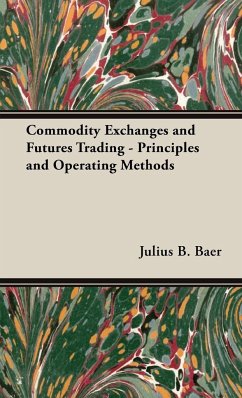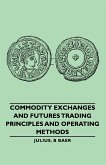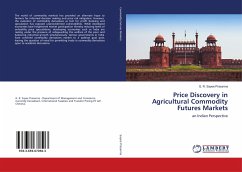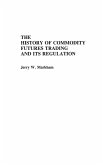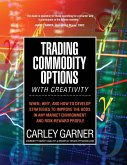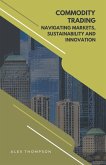Commodity Exchanges AND Futures Trading- PRINCIPLES AND OPERATING METHODS by Julius B. Baer. Contents include: Preface x I HISTORICAL DEVELOPMENT OF COMMODITY EXCHANGES 3 Ancient Markets Markets in the Dark Ages The Medieval Fairs Merchant Associations The Law Merchant Courts of the Fair The Law Merchant Becomes the Common Law in the United States Development of the Modern Commod ity Market Organized Commodity Markets Not All Com modity Markets Have Exchanges Organization of Markets before Exchanges Brokers Commission AgentsDealers Risk Bearing Risks of Commodity Dealers The Market Risk of the Dealer Credit Risks of Dealers Other Risks of Dealers Major Defect in the Physical Markets Which Operate with out Exchanges The Growing Need for Exchange Services in All Commodity MarketsProducers' Associations Dealers' Trade Associations Establishment of Self-Regulation by Deal ers' Trade Associations Arbitration of Disputes Standardiza tion of Contracts Standardization of Qualities or Grades II THE ECONOMIC FUNCTIONS OF COMMODITY EXCHANGES 27 The Exchange Market Place of the Commodity Exchange in Distribution The Risks of Modern Industrial Society The Exchange Market as a Guarantor of Deliveries ( at Contract Time) and of Payments for Deliveries ( at Contract Price) Exchanges Make Commodities Liquid Profit Margins in Dis tribution Are Reduced Exchanges Expedite Marketing-Exchanges Form a World Market Exchanges Level Prices be tween Markets Buyers May Anticipate Requirements Continuous Prices a Factor in Fair Dealing Does the Exchange Stabilize Prices? Price Movements Discount the Future The Exchange as a Source of Trade Information Exchanges Reg ulate Speculation Exchanges Promote Uniformity in the Trade Exchanges as Regulators of Consumption. III SPECULATION A CONSTRUCTIVE ECONOMIC ACTIVITY ON COMMODITY EXCHANGES 51 The Function of Organized Speculation in the Distribution of StaplesWithout Organized Speculation Exchange Markets Could Not FunctionAttacks on Speculation Defenses of Speculation Speculation and Gambling Does Speculation Make for Lower Prices? Phases of the Contention that Specu lation Lowers Prices Does Speculation Steady Prices? Ex change Trading Levels Prices between Markets The Specula tor's Assumption of Risk Speculators Provide a Broad Market Large Volume of Transactions on Exchanges Short Selling Regulation of Speculation IV GRADING, STANDARDIZATION, AND INSPECTION 86 Advantages of Inspection and Grading Establishment of Standard Grades and Methods of Classification Standards in the Cotton Trade Inspection and Grading in the Grain Trade Standards in the Rubber Trade Sampling Grading Ware housing V PUBLICITY OF PRICES, CROP AND MARKET REPORTS, AND OTHER STATISTICS 96 Importance of Reports and Statistics The Importance of Widespread Publication of Prices Sources of Information-Reports Issued Daily Report of the New York Cotton Ex changeDaily Market Report of the New York Coffee and Sugar Exchange Crop Statistics in the Grain Trade Annual Reports Prompt and Widespread Publication of Prices Con trol of Quotations Newspaper Reports Market Letters Reg ulation of Consumption VI COMMODITIES ADAPTABLE TO FUTURES TRADING 110 Units Must Be Homogeneous The Commodity Must Be Sus ceptible of Standardization of Grades Supply and Demand Must Be Large The Supply Must Flow Naturally to Market-Supply and Demand Must Be Uncertain The Commodity Must Not Be Perishable Commodities in Which Exchange Trading Is Conducted Commodities Not Adapted to Futures Trading Commodities Which Might Be Adapted to Futures Trading The Metals Iron-Other Commodities Wool Pe troleum Coal Conclusions VII THE FUTURES OR EXCHANGE CONTRACT 126 Physical ( Cash or Spot) Markets and Futures Markets Devel opment of the Futures or Exchange Contract Origin of the Contents vii Futures or Exchange ContractA Futures Co
Bitte wählen Sie Ihr Anliegen aus.
Rechnungen
Retourenschein anfordern
Bestellstatus
Storno

